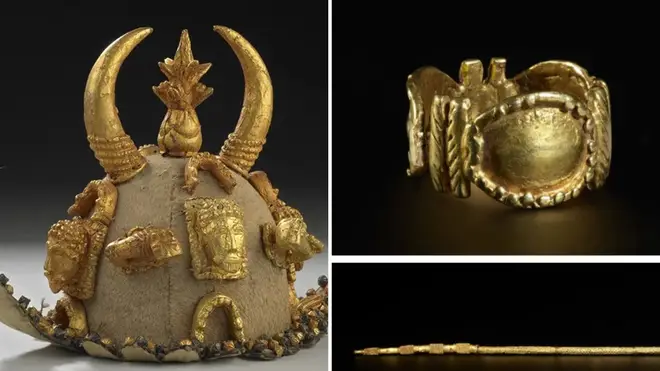
The UK is returning some of Ghana’s precious artefacts to their rightful home, after they were taken from the court of the Asante king 150 years ago.
The BBC has revealed that a gold peace pipe is one of the 32 items that will be returning under long-term loan deals.
The Victoria & Albert Museum (V&A) is loaning out 17 pieces, with 15 of them coming from the British Museum.
The chief negotiator of Ghana expressed optimism for a fresh era of cultural collaboration, aiming to mend long-standing grievances.
Certain national museums in the UK, like the V&A and the British Museum, are legally prohibited from permanently returning disputed items in their collections. Instead, they opt for loan agreements as a means to facilitate the repatriation of these objects to their countries of origin.
However, certain nations asserting their ownership of contested artefacts express concerns that loans could be interpreted as an acceptance of the UK’s ownership.
According to Tristram Hunt, director of the V&A, the gold items of court regalia hold a significance similar to that of “our Crown Jewels”.
A collection of historical artefacts, including a sword of state and gold badges worn by officials, is set to be loaned. These items were taken during 19th-Century wars between the British and the Asante. They hold significant cultural and historical value.
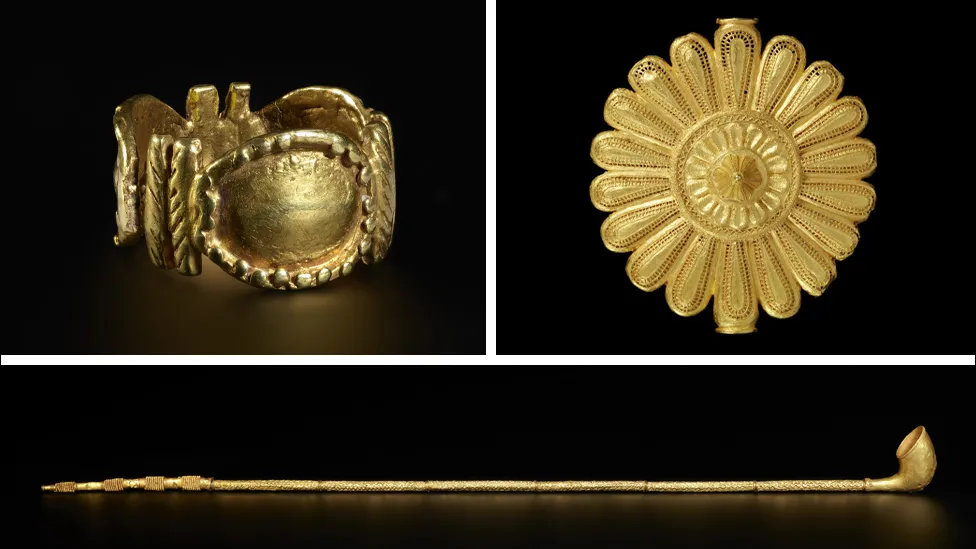
According to Mr. Hunt, it is important for museums to consider how they can share objects with origins in war and looting more fairly with the countries of origin.
“I believe that our museums can thrive through the establishment of partnerships and exchanges.”
Despite Mr. Hunt’s insistence, the new cultural partnership is not intended as a form of restitution, ensuring that permanent ownership is not returned to Ghana.
The three-year loan agreements, with an option to extend for a further three years, are not with the Ghanaian government but with Otumfo Osei Tutu II – the current Asante king known as the Asantehene – who attended the Coronation of King Charles last year.
The Asantehene’s ceremonial role remains influential, even as his kingdom is integrated into Ghana’s modern democracy.
The items will be showcased at the Manhyia Palace Museum in Kumasi, the capital of the Asante region, as part of the celebration of the Asantehene’s silver jubilee.
The Asante gold artefacts hold immense significance as they represent the embodiment of the Asante royal government and are believed to carry the essence of past Asante kings.
They hold great significance in Ghana, much like the Benin Bronzes – a collection of sculptures and plaques that were taken by Britain from the palace of the Kingdom of Benin, located in present-day southern Nigeria. Nigeria has been persistently demanding their return for decades.
Nana Oforiatta Ayim, special adviser to Ghana’s culture minister, emphasised the significance of these items, highlighting their spiritual importance. They play a crucial role in shaping the identity of the nation. It feels like fragments of who we are coming back to us.
She expressed her approval of the loan, describing it as a positive step forward on the anniversary of the looting. She also saw it as a symbol of healing and remembrance for the past violence.
There are numerous items in UK museums that have been acquired from Ghana, including a renowned gold trophy head that is considered one of the most iconic pieces of Asante regalia.
The Asante constructed a state in west Africa that was once renowned for its strength and influence. They engaged in trade of various commodities, including gold, textiles, and enslaved individuals.
The kingdom was renowned for its formidable military strength and abundant riches. Even in the present day, when the Asantehene engages in official events, he may find himself burdened by the weight of his extravagant gold bracelets. At times, he even requires the assistance of an aide to support his arm.
Europeans were attracted to what they later named the Gold Coast by the stories of African wealth and Britain fought repeated battles with the Asante in the 19th Century.
In 1874, following an Asante attack, British troops carried out a “punitive expedition,” as it was referred to in the colonial era. They proceeded to loot Kumasi and seize numerous treasures from the palace.
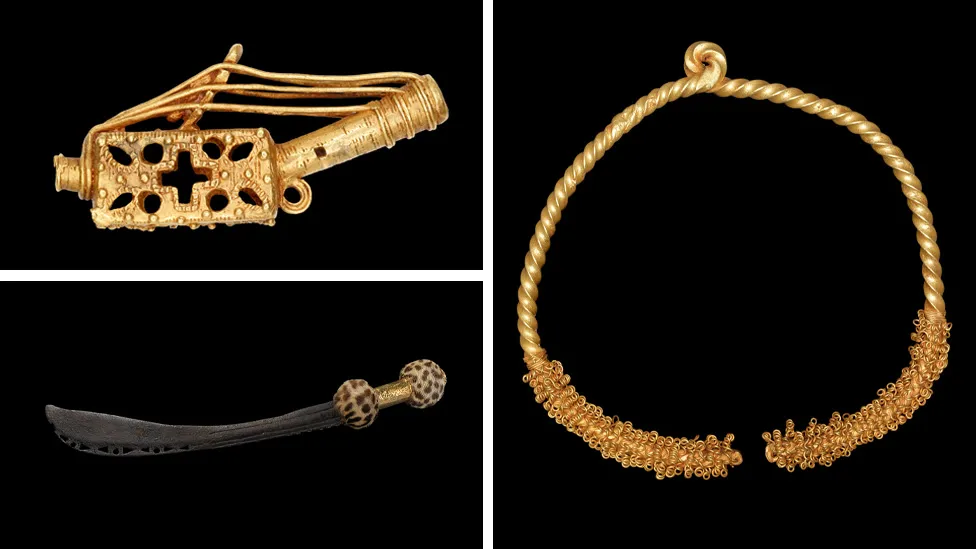
The V&A is returning a majority of the items that were purchased at an auction on 18 April 1874 from Garrards, the renowned London jewellers responsible for maintaining the UK’s Crown Jewels.
They feature three exquisite cast-gold pieces referred to as soul washers’ badges (Akrafokonmu), traditionally worn by esteemed court officials tasked with purifying the king’s soul.
According to Angus Patterson, a senior curator at the V&A, the acquisition of these items in the 19th Century had motives beyond just accumulating wealth, although that was certainly a factor. It’s also about getting rid of the emblems of government or the emblems of authority. It’s a highly charged and controversial action.
The British Museum is also returning on loan a total of 15 items, some of them taken during a later conflict in 1895-96, including a sword of state known as the Mpomponsuo.
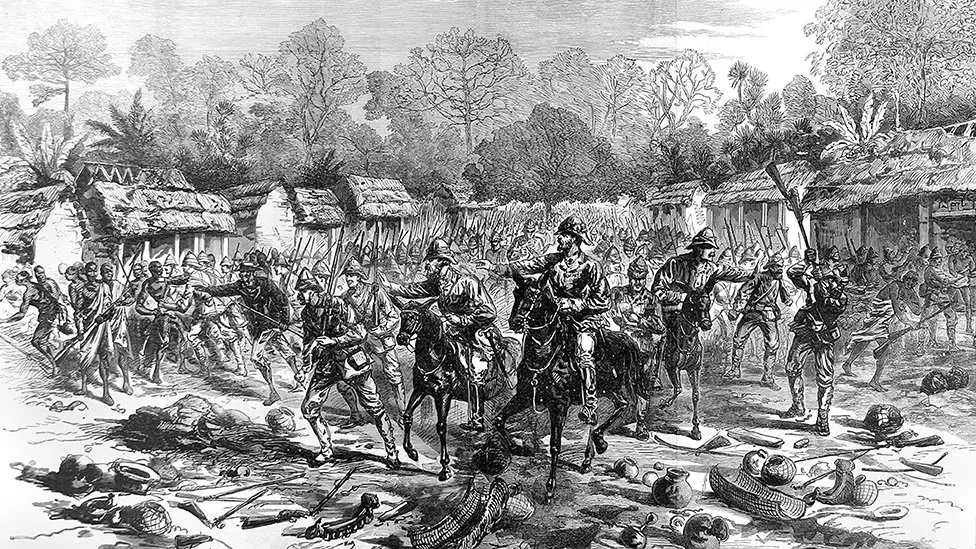
Additionally, there is a ceremonial cap called a Denkyemke that is adorned with lavish gold ornaments. It was traditionally donned by esteemed courtiers during important ceremonies and festivities.
The British Museum is also loaning a cast-gold model lute-harp (Sankuo), which was not looted, to emphasise its longstanding connection with the Asantehenes.
In 1817, the sankuo was given to Thomas Bowdich, a British writer and diplomat. It was meant to showcase the wealth and prestige of the Asante nation, serving as a gift from the Asantehene to the museum.
‘Navigate through the political landscape’
Is it possible to return objects to a country that accuses you of theft?
It presents a potential resolution to legal limitations in the UK that might not be well-received by nations seeking to rectify a long-standing injustice.
The Parthenon Sculptures, also known as the Elgin Marbles in the UK, have gained significant attention.
Greece has been requesting the repatriation of these ancient sculptures currently exhibited in the British Museum. The chair of trustees, George Osborne, recently expressed his desire to find a practical and rational solution moving forward. He is currently exploring a potential partnership that would temporarily set aside the question of ownership of the classical sculptures.
This agreement with the Asantehene represents an alternative approach; a mutually beneficial solution that aligns with the Asante king’s interests and is compatible with British legal requirements.
Similar to Nigeria’s stance on the loan of the Benin Bronzes, it would have posed a challenge for Ghana’s government to accept such an agreement.
However, according to Mr. Hunt, the agreements made between the V&A, the British Museum, and the Manhyia Palace Museum were able to transcend political barriers. While it may not provide a complete solution, it does initiate the discussion.
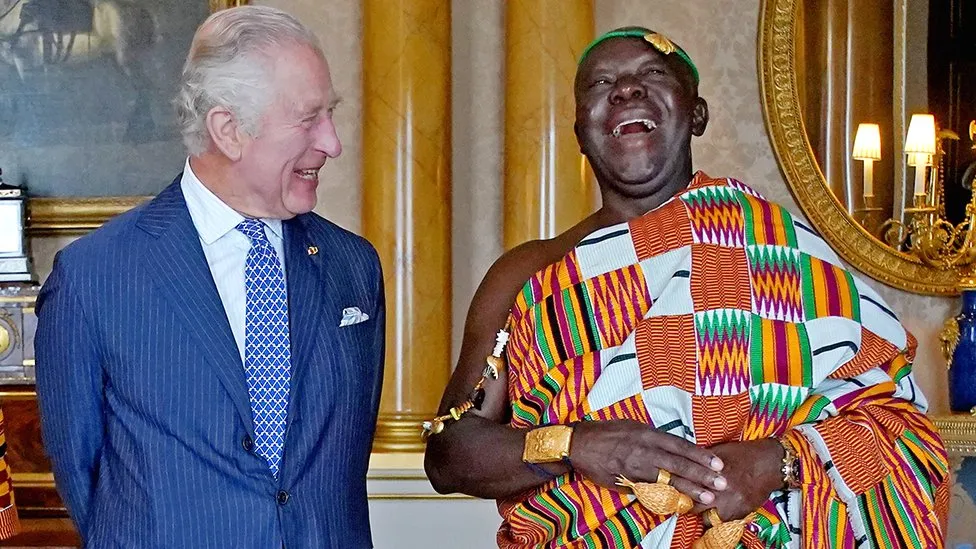
According to Ms Oforiatta Ayim, an adviser to the Ghana culture minister, it is understandable that people may feel upset about the concept of a loan. However, they are hopeful that the items will eventually be returned to Ghana on a permanent basis.
“It has been confirmed that the objects were taken under distressing circumstances and that they rightfully belong to the Asante people,” she stated.
The British government has a policy of preserving and providing context for state-owned institutions, ensuring that disputed objects are retained and their significance is explained.
Both the Conservative and Labour parties have shown no inclination to modify existing legislation. At certain renowned institutions, museum trustees are prohibited from removing items from their collections, thanks to the British Museum Act of 1963 and the National Heritage Act of 1983.
Mr Hunt is proposing a modification to the law. He is advocating for increased autonomy for museums, while also suggesting the need for a committee to oversee the restitution of items.
There are concerns that British museums may have to part with some of their most prized items in the future. As a former culture secretary, Michelle Donelan expressed to me the potential implications of the Parthenon Sculptures’ return, suggesting it would raise questions about the entirety of our museum collections.
However, Mr Hunt emphasised that only a small fraction of the V&A’s extensive collection of 2.8 million items has been subject to any ownership disputes.
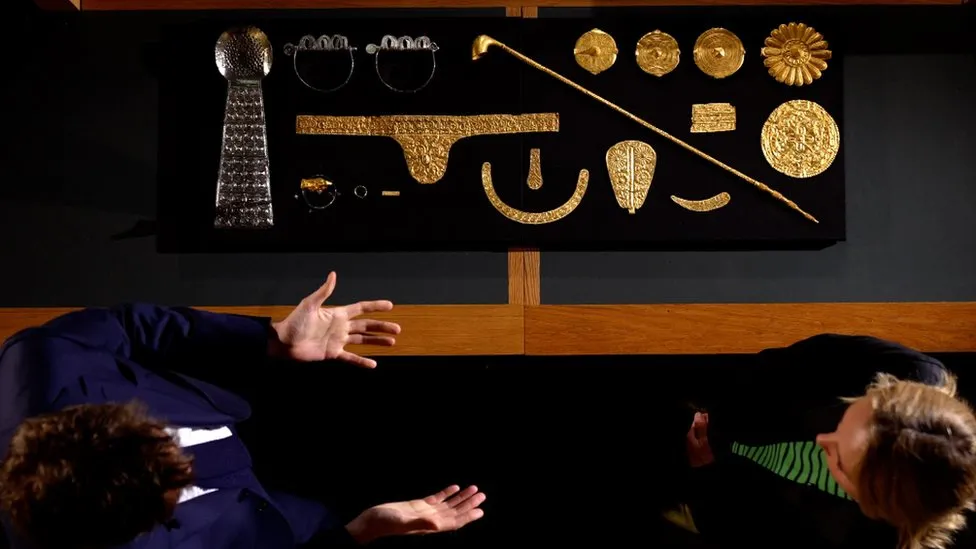
There is also concern that items that are borrowed and disputed may never be returned.
Ghana’s chief negotiator, Ivor Agyeman-Duah, dismissed that. “One must always honour their commitments and not deviate from them,” he stated.
There are also stunning Asante gold items in the UK. The Wallace Collection houses a renowned Asante treasure, the trophy head. It was also captured by British forces and acquired at the 1874 auction.
In addition to that, the Royal Collection houses various objects, such as a mask-shaped gold trophy head. This particular item symbolised vanquished adversaries, with the trophies being affixed to ceremonial swords in the state regalia through a hoop.
Is there a possibility of them being showcased in Ghana in the future? Mr Agyeman-Duah is proceeding cautiously.
However, as Britain grapples with the cultural repercussions of its colonial history, such agreements could serve as a diplomatic and pragmatic approach to acknowledging the past and fostering improved relationships moving forward – provided that both parties are willing to agree to the terms.




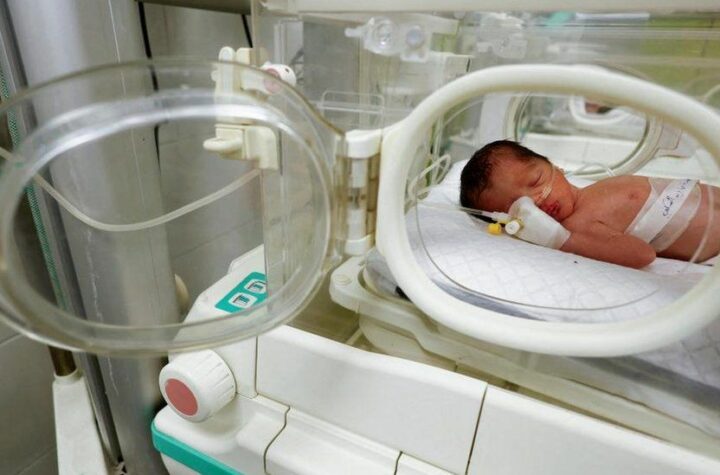
More Stories
Trial for Rape and Human Trafficking will take Place in Romania for Andrew Tate and his Brother Tristan
A British individual tests the first Customised Melanoma Vaccination
Gaza Baby Delivered from Dead Mother’s Womb Perishes